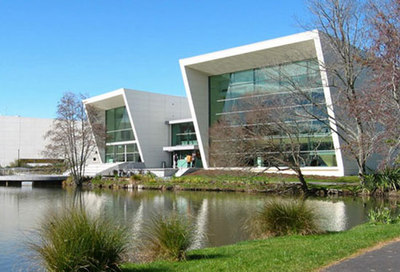First还是Firstly:列举的时候,美式用First,英式一般用Firstly (The terms ‘first’, ‘second’, ‘third’ and so on are used in US English, but ‘firstly’, ‘secondly’, ‘thirdly’ and so on should be used in UK English.)
noun+noun修饰结构:用一个名词修饰另一个名词时,第一个名词一般为单数(When a noun is used to modify another noun (adjectival noun), it must be in singular form. Thus, it is SDG implementation, not SDGs implementation)
缩写前的冠词:根据缩写的发音决定a或an的使用,如an SE process,而不是a SE process
&(ampersand)的使用:&一般用于替代and,但一般不出现在正式行文部分,除非某些特定短语,如“Johnson & Johnson.” (We typically do not use ampersands (&) in the text, except if they are part of parenthetical citations and proper names)
原回答
单引号(‘’)还是双引号(“”): 英式英语和中文习惯相反,一般用单引号,单引号里面才用双引号(It is UK style to use ‘single’ quotation marks, with closing punctuation outside marks (unless it belongs to the quoted material), and “double” marks for quotes within quotes. )
etc.的用法:在including,such as或for example的句尾,不要用etc(Typically, we do not use “etc.” along with an introductory phrase such as “including,” “such as” or “for example.”)
逗号在并列结构的用法:对于and, nor, but, or, yet 和 so连接的并列结构,若有三个及以上的并列,最后一个并列部分无需用逗号分开(a, b and c), 若三个以下并列可用逗号分开(A represents XXX,and B reflects XXX)。如果是两个共用主语(或其他结构)的句子,无需用逗号分开(A represents XXX and reflects XXX) (Typically, no comma is inserted before the coordinating conjunction (usually and or or) in a series of three or more terms in UK English. A comma is typically inserted to separate two independent clauses when they are joined by coordinating conjunctionsfor, and, nor, but, or, yet,and so.)
斜杠(/)的用法:斜杠前后无空格(a/b)(There should be no space on either side of the solidus (/).)
dash (–)还是hyphen (-):连接并列性质词语用dash (e.g. decide–announce–defend approach),把几个词连词来做修饰语用hyphen (e.g. a nine-year-old girl). (Used en dash (–), instead of hyphen (-), to denote terms of equal weight. Use hyphen (-) to combine two or more words to form one term. )
hyphen (-)的用法:ly结尾的副词和形容词在一起做修饰语时,无需用hyphen连接,如densely populated, 而不是 densely-populated (Compound adjectives that modify a noun are typically hyphenated, but compounds formed by an adverb ending in ly + an adjective are not hyphenated.)
分号(;) 的用法:这个说起来有点复杂,直接看例句吧:the XXX is currently under rapid development; thus, the proposed framework of XXX is subject to changes. (Use a semi-colon (;) before and a comma (,) after thus (or any conjunctive adverb) when you are using it to write a compound sentence. )
italics 和 bold:不要同时用这两者,有重复强调的嫌疑(it is better not to use italics and bold at the same time (double emphasis).)
数字的写法:两位数以上用阿拉伯数字,以下用英语拼写(We typically spell out single-digit whole numbers and only use numerals for numbers greater than nine.)
e.g. 和 i.e.:一般只用于括号中,在正式文本中用全拼for example 和 that is更好(e.g.and i.e.are used mainly in parentheses. The English equivalents for example and that is are preferred in the text for a formal expression.)
缩写的用法:一旦指定缩写,后文中就统一用缩写;缩写一般大写,但全拼的首字母一般无需大写,除非是专业名词,另外标题(包括文中的小标题)一般不出现缩写. (The first rule of abbreviations is that once an abbreviation has been defined, only use the abbreviation consistently thereafter. Although an abbreviation is composed of capital letters, the full words that define the abbreviation are not always capitalized. Typically, only proper nouns are capitalized. The use of abbreviations is generally to be avoided in Titles and Headings.)
On the other hand的用法:一般不单独出现,之前应有on the one hand. (Use “on the other hand” only when “on the one hand” has been used earlier, as these phrases are a pair. Otherwise, delete “on the other hand” or use another transition term/phrase.)
As well as的用法:用于强调as well as之前的内容,若无强调,单纯并列,用and更好。(“as well as” is generally used in non-restrictive phrases to put more emphasis on one of the elements. If there’s no distinction between two elements, we use “and.”)
toward or towards: 英式英语用toward (Toward is often used in British English)
Distinct Vs. Distinctive: 这个好复杂,直接看吧:While both distinct and distinctive are adjectives that mean something is different, but they are not used in the same ways. The adjective distinct means separate, clearly defined, and easily distinguishable from all others.Distinct also means notable or highly probable. The adjective distinctive means having a quality that makes a person or thing noticeably different from others.
Compare to Vs. Compare with: 用compare with比较同性质的两个事物 (Use compare(d) with to point out differences between objects regarded as essentially of the same order.)
the Netherlands: 这是个奇怪的国家,不仅要加the (小写),Netherlands还是复数 (The country’s official name includes “the”, and this word is not capitalised if the name appears in the middle of a sentence. )













